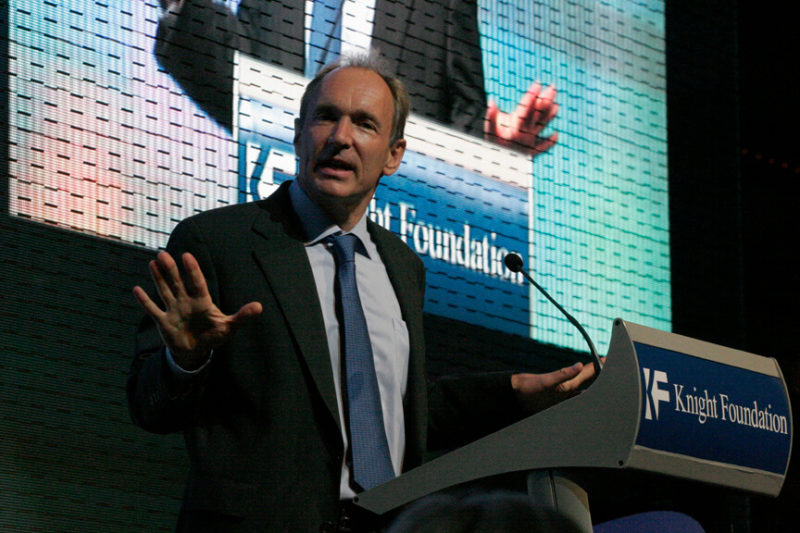What Is Web 3.0? Understanding Web 1.0 vs Web 2.0 vs Web 3.0 in 2025
Web3 promises to be the future of the internet, but what is Web 3.0? In this article, we’ll answer that question, explaining how it works, as well as its relationship with Web 1.0 and Web 2.0.
When you talk about the future of the internet, you can’t escape the term Web 3.0. Known as Web3 by some — especially in the crypto space — it’s a utopian vision of what the World Wide Web could be. However, that vision and what it encompasses might not be clear to most. What exactly is Web 3.0? Stick with us to find out.
Key Takeaways: Web 3.0 Meaning
- The web has gone through some marked shifts in its history, and it seems poised to be on the brink of a new one, called Web 3.0.
- Web 3.0 is usually associated with decentralized finance and other crypto-related web technologies, but it could go any number of other ways.
- One thing is for sure: user interaction will change forever, as will the way our data is treated.
In this article, you’ll learn about the internet era of Web 1.0 and Web 2.0, as well as what the future might hold for Web 3.0, including its connection to crypto and the metaverse.
Web 1.0 vs Web 2.0 vs Web 3.0
To understand what Web 3.0 is, or could be, we first need to look at what Web 1.0 and 2.0 were; after all, how do we know where we’re going if we don’t know where we’ve been?
Web 1.0: The Past
Web 1.0, the first publicly available internet, is the web that came about in the late ’90s. If you were around in those days, you probably remember the screech of modems and that weird bouncy sound. You’ll probably also remember having to pay by the minute for your bandwidth, and that you couldn’t use the internet and the phone (of course a landline) at the same time.
The web was also very different. It was generally a lot more static. Websites usually weren’t very interactive, merely displaying information. Hyperlinks that directed you to other pages, either on or off the site, were about as interactive as it got. You visited a site, read up on some information, saw a few images and that was it; you’ll see it referred to as the read-only web.
Web 1.0 was also highly decentralized, as most sites were owned by individuals or actual brick-and-mortar businesses. While there were some internet-only enterprises, these were more exception than rule. That said, while the internet back then may have been static, in some ways it was a lot more varied than it is now, with people trying out new things all the time.
Web 2.0: The Present
At some point the read-only web became a read-write web. As with all gradual changes, it’s hard to pinpoint exactly when it occurred. However, we can safely say it was underway by 2004, when the term Web 2.0 was popularized by entrepreneur Tim O’Reilly during the Web 2.0 Summits he organized from 2004 to 2011.

Instead of being a place where you’d pick up some information and then leave, the web became a place where you could interact with sites. You could still find information, of course, but the hurdles to creating your own content became a lot lower.
For example, something as commonplace as a Facebook wall, where internet users can leave a post and then others can give their opinion on it, would have been impossible under the Web 1.0 paradigm. In Web 2.0, though, these kinds of interactions are an everyday occurrence.
Web Pages’ Corporate Takeover
However, there is a shadow cast over Web 2.0: where Web 1.0 often felt like something cobbled together by hobbyists in the spirit of fun, Web 2.0 is a lot more corporate. Many of the sites lauded as examples of the new wave, like Facebook, Twitter and Google, are also responsible for changing the web in ways nobody could have foreseen.
For example, while the web was never free from surveillance, the massive networks built up by the tech giants to squeeze every penny of ad revenue they can get is a terrifying reality. While Web 2.0 is more interactive, it’s also pulling us further in with targeted advertising, treating us less like honored guests and more like objects to be exploited for profit.
Having more and more power flowing to just a handful of players also means that the web is a lot more centralized than it was back in the old days. Though web users’ input may have increased, the web itself is more of the same.
What Is Web 3.0?
Web 3.0 might include cryptocurrencies, blockchains, artificial intelligence and virtual worlds like the Metaverse, although we won’t now what Web 3.0 looks like until we’re already there.
The power of the web giants, however, is not going unchallenged. Currently, there are more than a few smart people the world over dreaming up alternatives to the web as it is now. Though we’re poor prognosticators ourselves, there are a few general threads we can identify. Let’s go over three of them.
1. Web3: The Crypto Catalyst
Probably the first thing most people think of when they hear Web 3.0 is a new web that’s centered around blockchain, cryptocurrency and related web technologies. Usually called Web3, it’s a libertarian vision of the web that would, on paper at least, be highly decentralized like Web 1.0, but give people the same input as Web 2.0.
First and foremost, Web3 is a financialized internet where decentralized finance (DeFi) holds sway. Deals for content would be made between people within decentralized autonomous organizations (DAO) with smart contracts and then written onto the blockchain so the terms and conditions can be inspected at any time by anybody.
Cryptocurrency would be how everything — from user-generated content to decentralized VPNs — would be paid for. Digital assets like NFTs are naturally also a part of this new ecosystem and would both serve as collectibles as well as membership badges to online clubs. Crypto would also be how everybody would pay to sell and access data.
The web as envisioned by crypto enthusiasts sounds interesting, as it would be completely in the hands of users. In some scenarios — don’t forget that there isn’t a single vision of Web3 as, well — even centralized servers would be done away with. Instead, we’d use decentralized data networks, powered by internet-connected devices to access the web.
The Web3 Downside
As cool as this all sounds, the utopia of Web3 seems to have been overtaken by events, and badly, too. The 2022 crypto crash put the lie to the idea that cryptocurrency can be used for any kind of transaction. Plus, how decentralized is a decentralized autonomous organization really if a small group of people can easily pull all the power within it to themselves?
On top of that, you could argue that Web3 would actually make data mining worse than it is now. While blockchain technology does enable greater transparency, having all that information out in the open also makes it much easier to mine using machine learning algorithms. In this scenario, the data wouldn’t even be anonymized.
You could argue that in this crypto-fuelled Web3, we’d only be swapping out one set of overlords — search engines and social media giants — with another, namely billionaire libertarians and crypto fanatics. Unless you’re in one of those groups, that doesn’t sound too appetizing. Could there be another alternative?
2. The Semantic Web: Tim Berners-Lee’s Vision
While plenty of people have ideas for what Web 3.0 would look like aside from a crypto utopia, the most cohesive and coherent vision comes from Tim Berners-Lee, the man credited with inventing the World Wide Web.

Berners-Lee has two ideas, both of which work with each other. The first is the Semantic Web, an internet in which data is connected across the entire web and read by machines. The goal is to connect data better, then make better artificial intelligence to read it and thus create an internet that can process and create information quicker.
One example of the Semantic Web in action would be smarter search results: instead of putting in a keyword and getting a host of data, not all of which is useful to you, you could use natural language to find what you’re looking for. The AI would be able to filter out the chaff, and hopefully you’d get much smarter results.
Looking Solid
The other prong for a more decentralized web that Berners-Lee proposes is to store all our personal data in so-called pods. Each one of us could then determine what information would be in the pods, and who could access it. His company Solid is working on implementing this idea.
What this would mean for people is that their information is no longer just floating out there, ready to be grabbed by anybody with the ability. Instead, you could tightly control your own data, and companies like Meta, Facebook’s parent company, and Google would not be able to get to it.
This would be real decentralization that doesn’t rely on tokens or blockchains: what’s in a pod can only be revealed when its owner allows you to. Also, it takes away the financialization of data, which would remove some of the dog-eat-dog practices we see on the current web.
3. Another Option: The Metaverse
Both these options have their pros and cons. However, both to a certain extent assume that the web won’t change in any meaningful way: we’ll keep interacting with it the way we always have, through a screen where we read information from. What if that’s no longer the rule moving forward?
Mark Zuckerburg’s Meta, for example, is creating a virtual reality version of the web in which our avatars will walk around and exchange information with other avatars. Though the first few looks we’ve had have been disappointing, there’s no saying how this will develop in future.
Of course, if the idea does take off, maybe we’ll have a metaverse that exists alongside the internet, or one that is intertwined with it. Maybe Meta’s metaverse will be all of it, or just a small part. Either way, it would change the way we use the internet irrevocably.
Both the ideas of Berners-Lee as well as those of crypto evangelists could apply to this new metaverse, but in very different ways. For more key facts on the topic, check out our guide on Metaverse statistics.
Final Thoughts: Web 1.0 vs Web 2.0 vs Web 3.0
The third generation of the internet — whether we call it Web 3.0, Web3, Semantic Web or something else entirely — could be any of these three ideas, a combination of them or something that nobody has even come up with yet.
One thing that is for sure, though, is that internet usage will change, sooner rather than later.
What do you think the future of the web will be? Will the crypto crowd take over, or will the likes of Berners-Lee restore some order? Will corporations rule the roost, or can we take back the power? Let us know in the comments below and, as always, thank you for reading.
FAQ
Web 3.0 is the web of the future, the next iteration of the internet.
Because it’s the future, it’s hard to say for sure what Web 3.0 will look like, but machine learning, edge computing, artificial intelligence as well as virtual reality could all be serious factors.
It’s hard to say when the transition between the current internet and the “next” internet will be. Maybe when we look back in five years we could say we’re there now.


